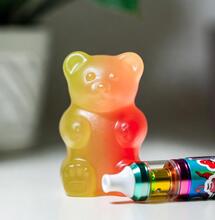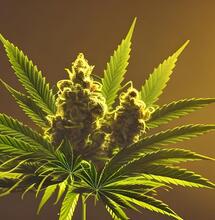How High is the American Workforce?

Rumor has it, it's a fad to test positive for marijuana use on your job these days. Is that a bad thing? Smoking weed to relax and reclaim your cool or toking as a way to avoid drinking alcohol - that's certainly not a bad thing. But if getting high costs you a mistake you would rather wish avoided at work, that's where things become a little more complicated.
The number of legal states has gone up in recent years. In 2022, more than half of the U.S. population had access to legal weed. Therefore, it is no surprise that the number of weed users within the American workforce would increase.
Quest Diagnostic is a medical lab and testing company that has gathered annual workplace drug testing data since 1988. For the year 2022, they recorded the highest level ever of general U.S. employees who have tested THC positive.
More than 6 million urine samples were analyzed by Quest in 2022 for marijuana use in the general worker category, of which 4.3% were positive, up from 3.9% in 2021. The general worker category excludes sensitive professions where drug testing is performed routinely, think pilots, truck drivers, or government jobs.
Within the federally mandated safety-sensitive jobs, there is also an increase in positive tests for marijuana usage. In 2022, the percentage of positive marijuana tests in this group at a national level stood at 0.98% compared to 0.86% in 2021.
According to the Quest analysis, testing positive for marijuana following an on-the-job accident increased to an all-time high in 25 years in 2022. Post-accident positive urine tests in the general U.S. workforce climbed to 7.3% last year, up from 6.7% in 2021.
Post-accident marijuana positivity has been steadily climbing between 2012 and 2022, measuring a whopping 204.2% increase during this time period. In contrast, between 2002 and 2009, or before legalization, post-accident marijuana positivity followed a declining trend.
It looks like testing positive for THC is trending in every industry. From the figures given in the Quest report, there's the most likelihood for an employee returning a positive THC test in the Accommodation and Food Services. In this sector, there has been an increase of 42.9% in positive tests (But hey, look on the bright side, some of the best-tasting food is prepared when a person is high. Either that or burn the whole thing).
The increase in Retail Trade is 42.6% (Using eye drops helps you hide those red eyes after smoking; you need that desperately when you try to sell something, thank me later for this life-saving tip). And the increase in Finance and Insurance is 38.5% (Okay, I hope the bank manager at least used some nice Sativa that improves concentration and brain alertness if they were to handle my money).
Jokes aside, showing up high on your job or incapacitated from previous weed use is not cool. (The only exception might be if you hate your job and you hate your boss, and you already have a well-planned next step for your career after your high-styled departure from that company).
Last but not least, the Quest report also shows an increase in the usage of other drugs, such as amphetamines and cocaine. Amphetamines positivity has gone up by 15.4%, driven by increases in 14 out f 15 industries, and was highest in Education Services, at 2.1%. Cocaine positivity has increased in 12 of 15 sectors year over year, most notably in Construction.

.jpg)












